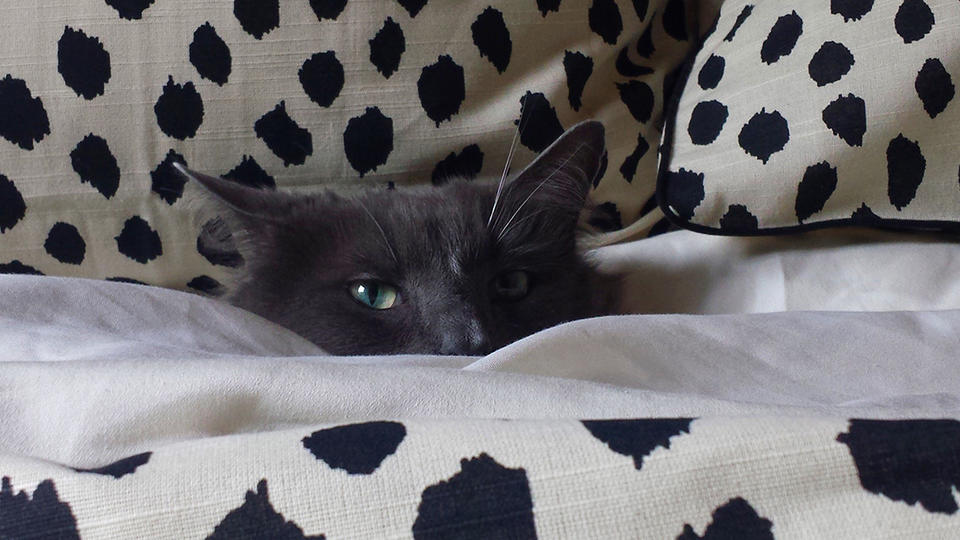
Life Of The Party
What Rubi's Quinceañera Can Teach The U.S. About Latinos
By Claudia Kolker
What Rubi's Quinceañera Can Teach The U.S. About Latinos
The look was American Gothic, South of the Border. Flanking a teenager in tiara and leopard-print ball gown, Crescencio Ibarra and wife Anaelda stared fixedly into a camera in San Luis Potosí, Mexico, and invited viewers to their daughter's fifteenth birthday.
More than 1.3 million Facebook users worldwide have since RSVP'd.
The video invitation to Rubi's quinceañera, sometimes called a quince, first surfaced widely last week on YouTube. (Reportedly, Mr. Ibarra hit "public" instead of "private" on Facebook.) In the aftermath, Rubi Ibarra García and her slightly stunned parents have become an unprecedented sensation.
For Mexicans and viewers who know their traditions, Rubi's quince is now an online Vesuvius of memes and absurd video parodies. For U.S. marketers, though, it's something else: a glimpse at what makes the vast, coveted and hard-to-reach Latino market tick.
"It really shows the practical power of cultural literacy," says Utpal Dholakia, a management professor at Rice Business School. "It's why business training needs to give global perspective — and why business schools need diverse students, of all backgrounds, not only Latino. At some point, they're going to be educating each other."
Rubi's video certainly gives plenty to study. As she and her mother (swathed in a salmon-pink poncho that's now a meme of its own) look on stonily, father Crescencio faces the camera from under a cowboy hat to make his offer: At the December 26 party, three bands will perform for the celebration, plus a fourth during the meal. A traditional mass will be said. And, to the amusement of hundreds of thousands of viewers, a "chiva" worth $10,000 pesos will be up for grabs. Depending on the region, this may mean either a live goat, cooked cabrito, or a horse race with a big prize.
Quinces are meant to be blowouts, a young woman's debut in her community. Both in Mexico and parts of the United States, serious quinces eclipse weddings. The quince girl gets a giant pastel hoopskirt; teen ladies- and gentlemen-in-waiting practice dance steps for months; traditions like the Last Doll of childhood, the First High Heel of womanhood, the emotional missive, and first waltz with Daddy ensure torrents of tears.
In the Southwest, it's all so tempting that boys and non-Latinos sometimes get quinces too, with touches such as '40s-style zoot suits, hip-hop deejays, and bouncing low-rider limos.
Even so, the Ibarras hardly meant their invitation to race round the world. They certainly couldn't guess that so many Latinos would count themselves as community. "People are having fun with this because it's such a huge part of the culture to celebrate a 'fifteen' that it's very relatable," says Juan Alanis, former Hispanic corporate communications lead for AT&T, and cofounder of Big Oak Tree Media, a communications firm.
Columnist Gustavo Arellano, author of cult favorite "Ask A Mexican!" column in Orange County Weekly, checks off the video's charms. "There's the stoic looks of the mom and Rubi," he says. "There's the clash of culture, millennial versus traditional. The earnestness of the dad. And the innocence of it all: a breath of fresh air in such a cynical world. The laughter that people have isn't necessarily at the family's expense, but rather a feel-good reminder of the truly important things in Mexican culture: a party, a quince, and a loving family."
Celebrities have invited themselves to the fiesta with tweets, posts and videos. Singer Espinoza Paz was one of several who RSVP'd and asked to perform at the party. Actor Gael Bernal Garcia, famous for the movie Y Tu Mamá También, filmed a parody with a clip-art goat looming on a barn roof and comic Piolín, in a tiara, playing Rubi. (Everyone's invited -- "y tu mamá también," Piolín blurts).
Rubi's family has shown up on Mexican morning shows, and the tweets and RSVPs keep on coming. "Another tortilla please," tweeted one wit, over one face in a shot of thousands of people jammed into a plaza.
"Okay, let's go!" tweeted another, over a Photoshopped image of an elongated bus with roof and sides covered by thousands of clinging riders. Destination: "San Luis Potosí."
Corporations are happily crashing the Rubi trend too. Mexican airline Interjet leapt in with a 30 percent discount on flights to San Luis Potosí. Goat not included, small print advises.
But, as one concerned viewer has queried on Facebook, is it okay for Anglos to laugh?
Absolutely, says Alanis, the media consultant. "It's the kind of story that puts a smile on a lot of people's faces just because of the unexpected attention. It's like the My Big Fat Greek Wedding effect. I think we're kind of saying, 'That's part of me. I know that family. I am that family.'"
Arellanos at first is doubtful the humor can travel, then changes his mind: "Maybe good ol' boys can appreciate it, á là Jeff Foxworthy comedy."
And while not every Mexican girl has or even wants a quince, all know the mystique. That's why Gwendolyn Zepeda, Houston's first poet laureate, who didn't get a quince during her own childhood in Houston, threw herself a raucous do-over decades later: "The Quinceañera You Were Too Poor to Have." Guests thronged, wearing tiaras and tulle, to tell about the quinces they missed — or those that went horribly wrong.
Although Rubi's family didn't plan on entertaining 1.3 million guests, Zepeda says, their expansive hospitality instantly rang true for her. "I went to Mexico often as a teenager, and since my parents didn't want me to going to clubs or bars, I was allowed to go to quinces, even when I didn't know the people," she says. "My dad used to say, it's okay for strangers to show up because a) that means it's a good party, and b) you'll contribute when the old lady comes around with a basket or during a dollar dance with the quince girl."
Rubi's quince took off, in other words, because it's full of precise references: funny at a time when many Mexicans feel pummeled; a mirror on intact, familiar habits; and a rowdy group conversation — not a speech. While all this makes it easy for Mexican consumers, businesses and entertainers to join the party, non-Latinos who take the time can learn the moves too.
"The Disney company could easily have stepped in saying, 'We're going to make this quince a true princess experience,' and then sent in a horse and carriage," Alanis says. "It would have translated perfectly."
This article originally appeared online in Gray Matters.


